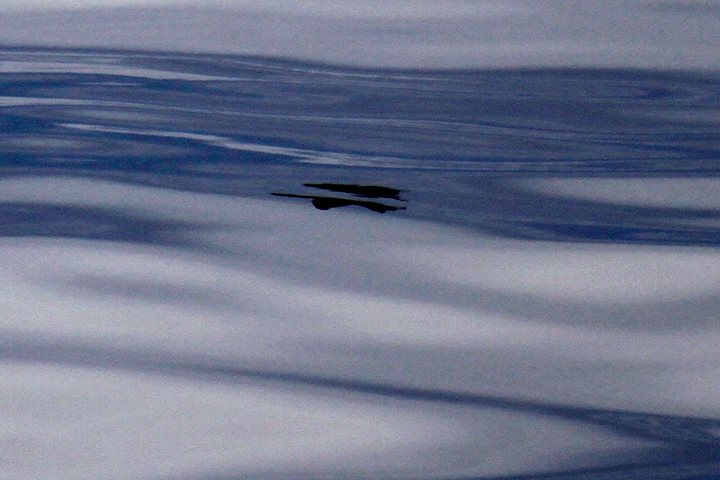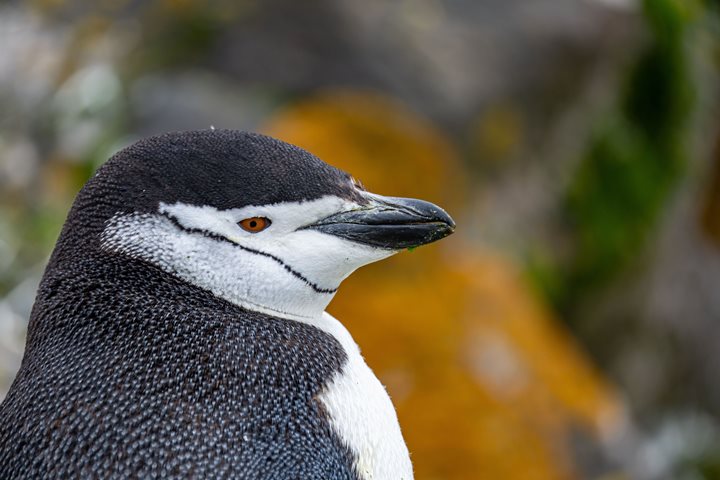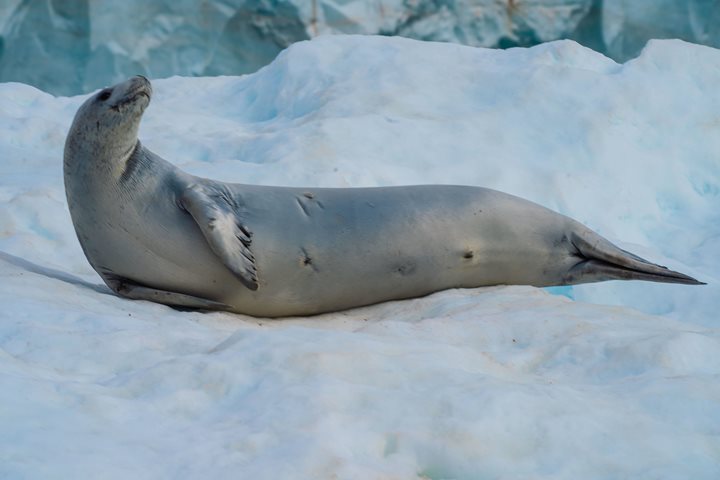The night was spent quietly at anchor just off Port Lockroy, our first destination of the day. After breakfast we attend a short briefing on the history of Base A. The presentation was conducted by one of the ladies who now work at the old base, which has been restored by the British Antarctic Heritage Trust and today functions as a museum, post office and shop. The base was originally set up in 1944 as “Operation Tabarin” before becoming a scientific base shortly after the end of the Second World War. It was closed in 1962. The visit to this historic site is much enjoyed and quite a lot of purchases are made to support the trust as well as a lot of postcard writing.
The other option is to visit Jougla Point on Wiencke Island, and get close-up looks of the Antarctic shags and the old whale bones that have been lying about here since the whaling days in the early 1900s. Others enjoy watching the gentoo penguins swimming among the small bits of ice caught in the bay next to the landing site.
During lunch the ship sails through the Neumayer Channel, today resplendent in the sunshine, the steep snow-clad mountainsides glistening under the bright blue skies. The long etched lines of ice stretching up the slopes are a reminder of the strong winds that often sweep through these places.
The ship then heads out into the Gerlache Strait, as we bask in the warm air and look out over glassy seas in search of large marine mammals. By mid afternoon we come across some logging humpback whales. These slumbering giants barely seem to register our presence. We proceed further in the hopes of finding slightly more active individuals and soon we are in a whale soup; it is difficult to know which way to head.
The experience is incredible as the ship draws close to them and on more than on one occasion they nose right up to the bulbous bow, eliciting ooohs and wows from us as we come to terms with all that we are witnessing. The giant white pectoral flippers glimmering under the surface of the water and even occasionally slapping the water, then suddenly in the distance a whale repeatedly breaches and then a little later a mother and calf off in the distance also begin leaping out of the water in synchrony; the thunderclaps as they hit the water audible to us.
Then suddenly word goes out that a pod of killer whales have been spotted coming in our direction. They are identified as “Little B’s” and are covered in diatoms, giving them a clear orange/light brown. There are some big females in the group as well as some males and young ones.
Soon a Zodiac is lowered with the killer whale researchers on board and they head off in the direction of the whales, hoping to be able to tag one of them. The “hunter become the hunted” as the group appears behind the Zodiac and they draw so close that they almost seem to touch the craft. Of course this means that it becomes a lot easier to get a tag on to one of the dorsal fins, and soon enough we see the bright orange cross-bow bolt hurtling towards its target and then the raised arms from everybody in the Zodiac confirm that the tagging was successful.
To end this wonderful day we sail through the quiet waters of Wilhelmina Bay with soft alpen-glow all around us. It has been another superb day for us all. Our tired, overloaded senses collapse with us into our beds.







